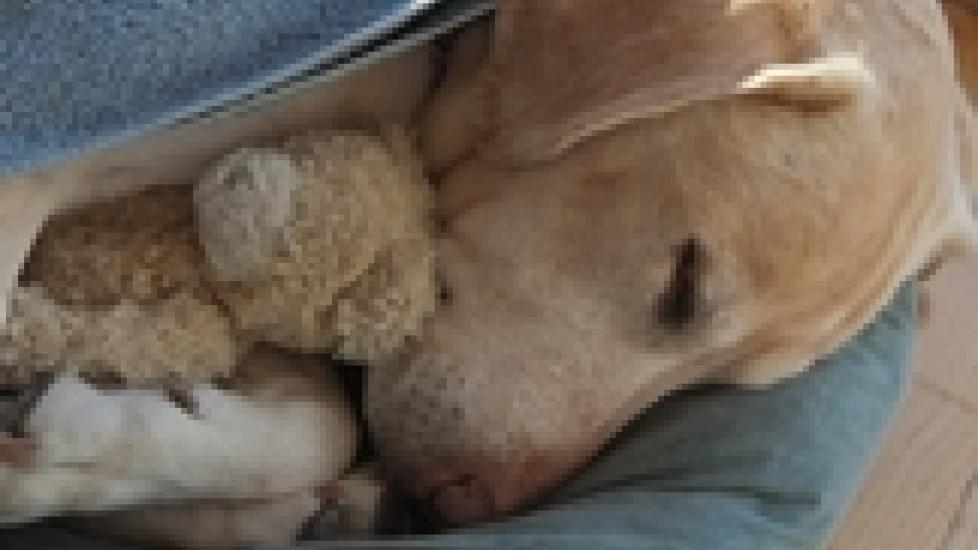Do Animals Dream?
My adopted dog, Roxy, survived in a drainage ditch during the wettest and coldest time of the year with compound fractures of both wrists (bones protruding through open wounds), in coyote infested territory for 5 ½ weeks. Most nights, while fast asleep, she vocalizes; from pathetic whimpers to ferocious protective growls to unidentifiable, non-descript sounds. Is she dreaming of those lonely, fearful nights in the ditch? Is she longing for her former life? Is she dreaming at all? I think all of the above but she can’t confirm it for me. So I sought to investigate the possibility that animals dream. This data is far from scientifically defensible but I think worthy of speculation.
Dr. Stanley Coren, Dream Researcher
Dr. Stanley Coren, professor of psychology at the University of British Columbia, confirms that “at the structural level, the brains of dogs are similar to those of humans.” He also notes that during sleep their brain wave patterns are similar to that of people. These electrical stages of activity are consistent with the idea of dreaming in dogs.
His research is corroborated by researchers at the Massachusetts Institute of Technology, who have very suggestive evidence that sleeping rats dream. Rats that were subjected to a complex maze had the same electrical brain recordings during the actual maze training as they did while asleep, presumably dreaming of the maze activity. The dreams waves were so specific that researchers could identify the exact point in the maze that the rats were dreaming about.
The Dog's Dreaming Brain
The dog brain is even more complex than the rat brain, so it is not a far leap to assume that dogs also dream. In fact, studies have shown that dogs exhibited body movement only at brain wave stages associated with dreaming. “Dreaming Springer Spaniels flushed imaginary birds, while Doberman Pinchers picked fights with dream burglars.”
Dr. Coren’s Observations on Dog Dreams
“It is really quite easy to determine when your dog is dreaming without resorting to brain surgery or electrical recordings. All that you have to do is to watch him from the time he starts to doze off. As the dog's sleep becomes deeper, his breathing will become more regular. After a period of about 20 minutes, for an average-sized dog, his first dream should start. You will recognize the change because his breathing will become shallow and irregular. There may be odd muscle twitches, and you can even see the dog's eyes moving behind its closed lids if you look closely enough. The eyes are moving because the dog is actually looking at the dream images as if they were real images of the world. These eye movements are most characteristic of dreaming sleep. When human beings are awakened during this rapid eye movement or REM sleep phase, they virtually always report that they were dreaming.”
Cat Dreams
It appears cats also dream and act out wake behaviors. Researchers have witnessed “sleepwalking cats walking, swatting their forepaws, even pouncing on imaginary prey.”
Do Our Pets Dream?
Personally, I think so. The scientist in me has doubts about the quality of the present research and extrapolation to various animal species. However, Roxy experiences something most nights that is undeniable. Your thoughts are welcome.

Dr. Ken Tudor
Image: esmo / Shutterstock
